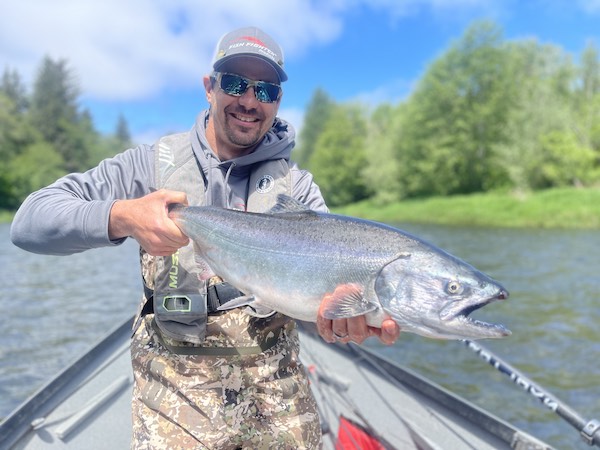
Chinook Limit Reduced On Quillayute System
With “some major concerns” about this year’s run, Washington state salmon managers have reduced the hatchery Chinook limit on the Quillayute River and its tributaries to one a day as a precautionary measure.

“We’re just trying to be cautious,” said WDFW’s Mark Baltzell, who pointed to a return so far of just around three dozen of the salmon back to the hatchery on the Sol Doc as the run nears its usual 50 percent completion date in two weeks.
A total of 900 fish are needed for broodstock.
The rule change was signed by Director Kelly Susewind late this afternoon and it was announced via WDFW’s Facebook page and emergency regs page. It goes into effect July 1 on the mainstem Quillayute, Sol Duc, Dickey, Bogachiel, and Calawah Rivers.
Of note, bait restrictions also begin that day on the Bogey and Dickey, and on the Duc on July 16.

These Forks-area rivers (and many across Washington) are once again running unseasonably low, with the Calawah running at just 29 percent of average for today, but it’s unclear if water flows are holding up the Chinook return or if it’s just a small run this year, or both.
Baltzell reports that sport catches have been lower, though that’s only based on passive monitoring of the fishery. He says that tribal catches have been “OK, but not off the charts.”
He suggests staying tuned to the situation and said that the Olympic Peninsula Guides Association had been advised. The one-hatchery-fish limit could stay in effect, or there could be total closure, depending on what the data tells WDFW officials.
The vast bulk of Chinook caught in the Quillayute system are landed in the Sol Duc and in May and June, but a few continue to be landed there in July, based on past sport catch card data.
